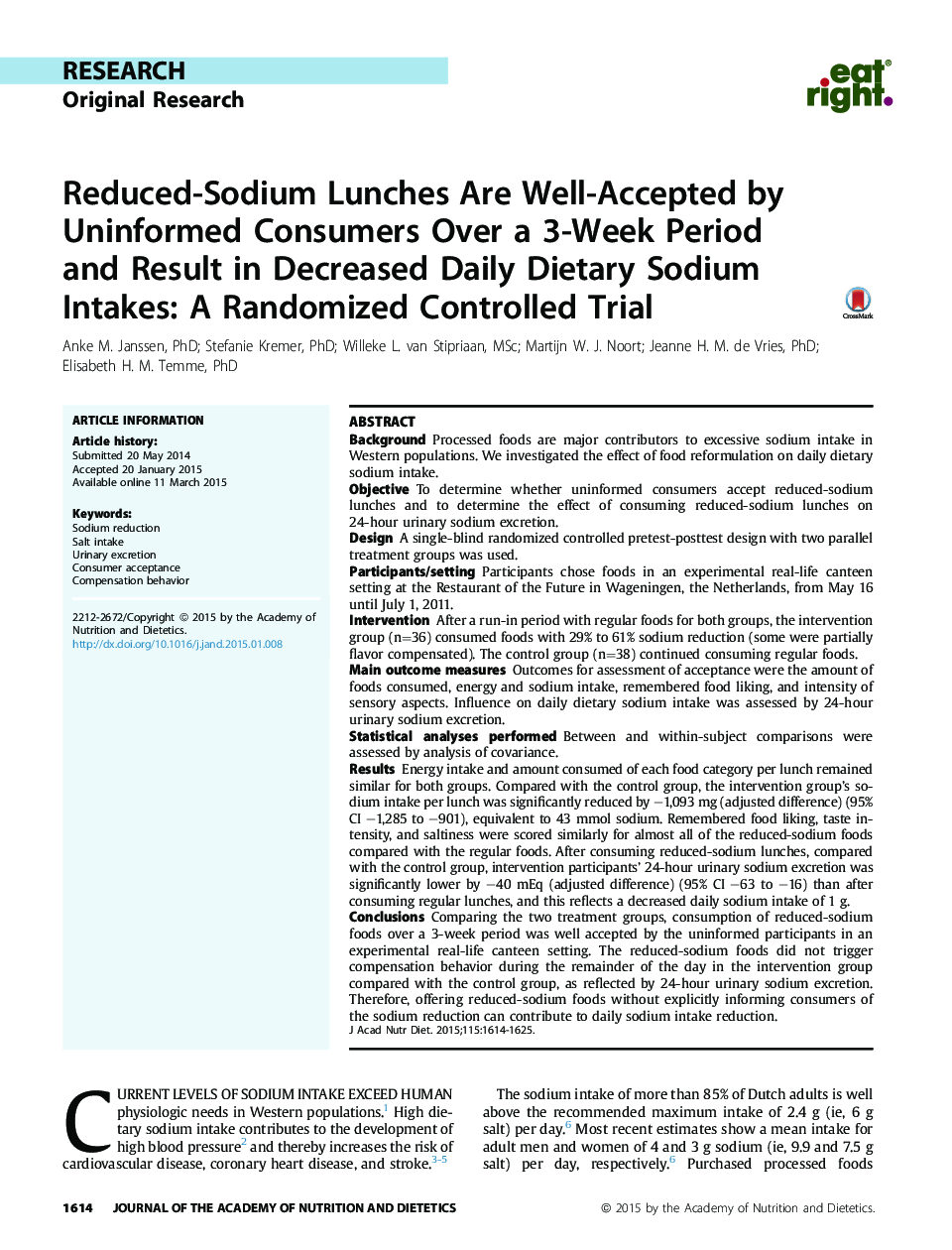| کد مقاله | کد نشریه | سال انتشار | مقاله انگلیسی | نسخه تمام متن |
|---|---|---|---|---|
| 2656752 | 1564044 | 2015 | 12 صفحه PDF | دانلود رایگان |
BackgroundProcessed foods are major contributors to excessive sodium intake in Western populations. We investigated the effect of food reformulation on daily dietary sodium intake.ObjectiveTo determine whether uninformed consumers accept reduced-sodium lunches and to determine the effect of consuming reduced-sodium lunches on 24-hour urinary sodium excretion.DesignA single-blind randomized controlled pretest-posttest design with two parallel treatment groups was used.Participants/settingParticipants chose foods in an experimental real-life canteen setting at the Restaurant of the Future in Wageningen, the Netherlands, from May 16 until July 1, 2011.InterventionAfter a run-in period with regular foods for both groups, the intervention group (n=36) consumed foods with 29% to 61% sodium reduction (some were partially flavor compensated). The control group (n=38) continued consuming regular foods.Main outcome measuresOutcomes for assessment of acceptance were the amount of foods consumed, energy and sodium intake, remembered food liking, and intensity of sensory aspects. Influence on daily dietary sodium intake was assessed by 24-hour urinary sodium excretion.Statistical analyses performedBetween and within-subject comparisons were assessed by analysis of covariance.ResultsEnergy intake and amount consumed of each food category per lunch remained similar for both groups. Compared with the control group, the intervention group’s sodium intake per lunch was significantly reduced by –1,093 mg (adjusted difference) (95% CI –1,285 to –901), equivalent to 43 mmol sodium. Remembered food liking, taste intensity, and saltiness were scored similarly for almost all of the reduced-sodium foods compared with the regular foods. After consuming reduced-sodium lunches, compared with the control group, intervention participants’ 24-hour urinary sodium excretion was significantly lower by –40 mEq (adjusted difference) (95% CI –63 to –16) than after consuming regular lunches, and this reflects a decreased daily sodium intake of 1 g.ConclusionsComparing the two treatment groups, consumption of reduced-sodium foods over a 3-week period was well accepted by the uninformed participants in an experimental real-life canteen setting. The reduced-sodium foods did not trigger compensation behavior during the remainder of the day in the intervention group compared with the control group, as reflected by 24-hour urinary sodium excretion. Therefore, offering reduced-sodium foods without explicitly informing consumers of the sodium reduction can contribute to daily sodium intake reduction.
Journal: Journal of the Academy of Nutrition and Dietetics - Volume 115, Issue 10, October 2015, Pages 1614–1625
